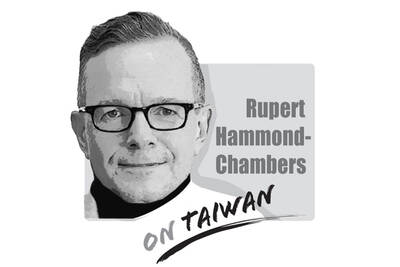Nearly 9,000 more people died than were born in Taiwan in the first half of this year, Ministry of the Interior statistics show, signifying that the nation is entering a stage of negative population growth. The situation is especially severe in urban areas.
The total number of births in Taipei this year is expected to fall below 20,000, which would be the lowest in the past decade. The falling birthrate is a national security problem that keeps getting worse and shows no sign of improvement.
The low birthrate among young people is most commonly blamed on economic and social factors, namely that young people have to bear a heavy economic burden and are too busy trying to make ends meet to think about raising children.
Another view blames social and generational changes, saying that young people would rather lead a life of freedom and leisure as “DINKs” (dual income, no kids), rather than be tied down by children.
Given this situation, the central and local governments provide maternity bonuses and child-rearing allowances in the hope of encouraging people to have children.
However, the existing monthly child-rearing allowance from the central government — NT$2,500 for children from birth to five years old — and the maternity allowances given out by local governments — the highest being in Taoyuan, which pays a childbirth bonus of NT$30,000 per child and a monthly childcare allowance of NT$3,000 for children under three years old — are a drop in the ocean compared with the money and effort needed to raise a child into a useful member of society.
Young people will definitely not have children just to collect the allowances, which are better than nothing, but not more than that.
Physiological problems are another reason for the low birthrate. Factors such as environmental hormones and work-related stress have pushed the prevalence of infertility in Taiwan up to nearly 15 percent.
The fact that the US Centers for Disease Control views infertility as a public health issue shows that this problem is not confined to Taiwan.
Although there have been breakthroughs in assisted reproductive technology (ART), women who use it still have to endure dozens of doses of ovulation stimulants, the collection of eggs under general anesthesia and the implantation of fertilized eggs.
After all of that, couples still only have a 40 percent chance of becoming pregnant. This whole process causes considerable physical discomfort and psychological pressure.
Because medical insurance contracts specify that there is no payout for ART and there is no subsidy for it under the National Health Insurance system, couples can easily spend several hundred thousand New Taiwan dollars for a course of treatment, which is a heavy economic burden for most of them.
There are many infertile couples who long to have children. Many of them spend large amounts of money as they race against time to become parents.
If the government could consider providing partial subsidies for fertility treatment, it would be like manna from heaven for those couples — and it could give Taiwan’s birthrate a much-needed boost.
Fan Shuo-ming is a senior administrative specialist at National Chengchi University.
Translated by Julian Clegg

In the past month, two important developments are poised to equip Taiwan with expanded capabilities to play foreign policy offense in an age where Taiwan’s diplomatic space is seriously constricted by a hegemonic Beijing. Taiwan Foreign Minister Lin Chia-lung (林佳龍) led a delegation of Taiwan and US companies to the Philippines to promote trilateral economic cooperation between the three countries. Additionally, in the past two weeks, Taiwan has placed chip export controls on South Africa in an escalating standoff over the placing of its diplomatic mission in Pretoria, causing the South Africans to pause and ask for consultations to resolve
An altercation involving a 73-year-old woman and a younger person broke out on a Taipei MRT train last week, with videos of the incident going viral online, sparking wide discussions about the controversial priority seats and social norms. In the video, the elderly woman, surnamed Tseng (曾), approached a passenger in a priority seat and demanded that she get up, and after she refused, she swung her bag, hitting her on the knees and calves several times. In return, the commuter asked a nearby passenger to hold her bag, stood up and kicked Tseng, causing her to fall backward and
In December 1937, Japanese troops captured Nanjing and unleashed one of the darkest chapters of the 20th century. Over six weeks, hundreds of thousands were slaughtered and women were raped on a scale that still defies comprehension. Across Asia, the Japanese occupation left deep scars. Singapore, Malaya, the Philippines and much of China endured terror, forced labor and massacres. My own grandfather was tortured by the Japanese in Singapore. His wife, traumatized beyond recovery, lived the rest of her life in silence and breakdown. These stories are real, not abstract history. Here is the irony: Mao Zedong (毛澤東) himself once told visiting
When I reminded my 83-year-old mother on Wednesday that it was the 76th anniversary of the founding of the People’s Republic of China, she replied: “Yes, it was the day when my family was broken.” That answer captures the paradox of modern China. To most Chinese in mainland China, Oct. 1 is a day of pride — a celebration of national strength, prosperity and global stature. However, on a deeper level, it is also a reminder to many of the families shattered, the freedoms extinguished and the lives sacrificed on the road here. Seventy-six years ago, Chinese Communist leader Mao Zedong (毛澤東)